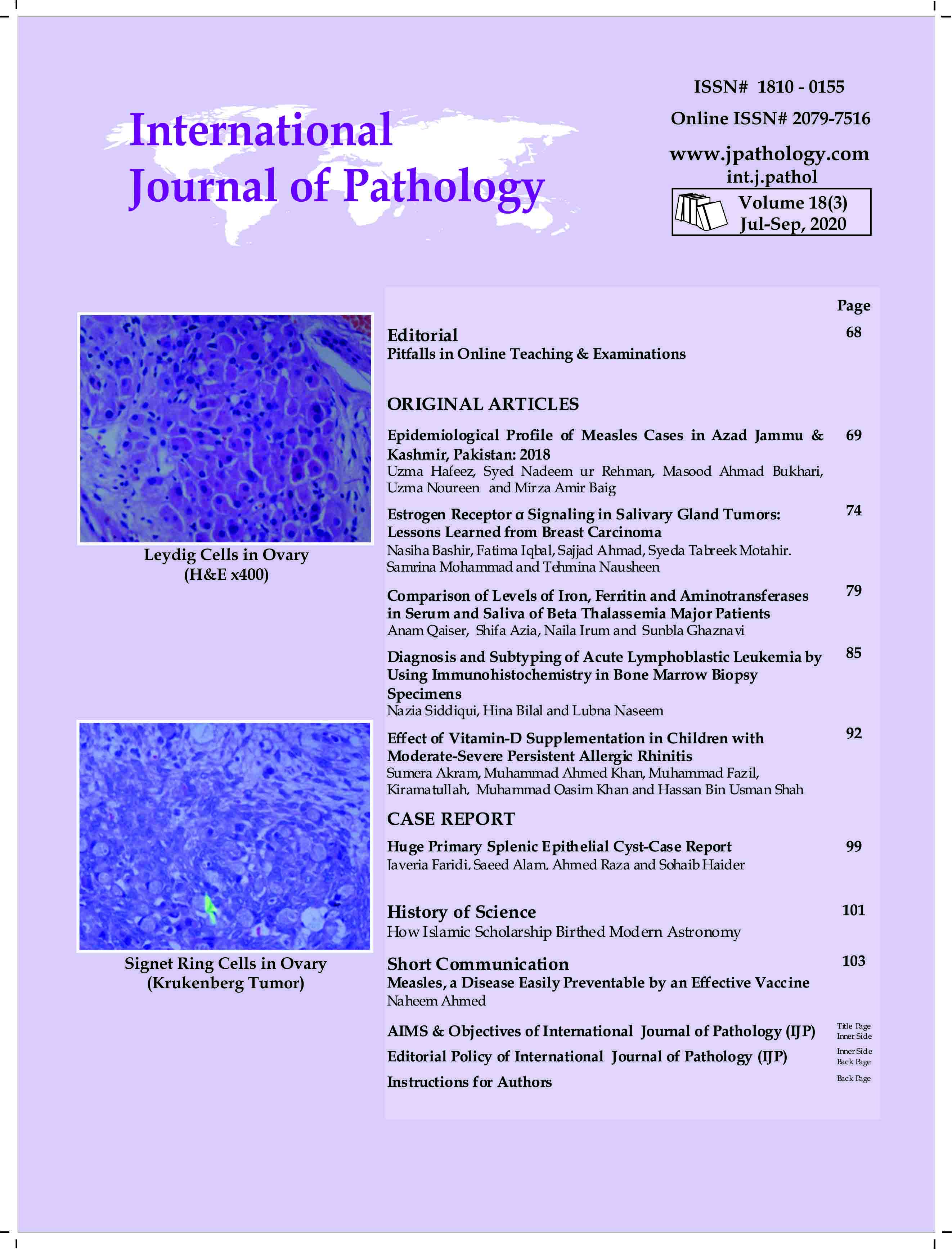Comparison of Levels of Iron, Ferritin and Aminotransferases in Serum and Saliva of Beta Thalassemia Major Patients
Keywords:
β – thalassemia, Saliva, Serum, Aminotransferases, blood transfusion, Iron Overload, Hepatic DamageAbstract
Background: β - thalassemia major is inherited disorder of single gene defect that occur as a result of more than 200 mutations in the beta goblin gene causing its impaired synthesis. Frequent blood transfusions are necessary for the treatment and management of thalassemia major patients. These excessive transfusions can often lead to iron overload that can damage many organs including liver, endocrine glands and spleen leading to life- threatening complications. This study was conducted to estimate the variables like iron ferritin and aminotransferases (ALT, AST) in serum and saliva of β-thalassemia patients.
Materials and methods: This study was conducted during a year from January-December 2018. It was a cross sectional comparative study. Forty diagnosed cases of β-thalassemia major were included in the study. From each patient both serum and saliva samples were collected. The levels of ALT and AST in serum and saliva samples of all study subjects were measured on chemistry analyzer using enzymatic kinetic method. Iron levels were measured by using ferrozine chromogenic method and absorbance were taken on microplate reader (Bio-RAD analyzer) capability and serum and saliva ferritin was measured by enzyme-linked immune-sorbent assay (ELISA) method.
Results: The results of the study showed a statistically significant difference between these two groups whereas the correlation analysis showed moderate correlation between serum and saliva iron and AST levels, weak correlation between serum and saliva ferritin level while strong correlation between serum and saliva ALT level.
Conclusion: This study concludes that saliva cannot be used as diagnostic marker for iron overload and liver damage in β -thalassemia major patients however saliva can be used as predictive marker.
Downloads
Published
Issue
Section
License
Copyright (c) 2021 Anam Qaiser; Shifa Azia, Naila Irum, Sunbla Ghaznavi

This work is licensed under a Creative Commons Attribution-NonCommercial 4.0 International License.
Readers may “Share-copy and redistribute the material in any medium or format” and “Adapt-remix, transform, and build upon the material”. The readers must give appropriate credit to the source of the material and indicate if changes were made to the material. Readers may not use the material for commercial purpose. The readers may not apply legal terms or technological measures that legally restrict others from doing anything the license permits.


